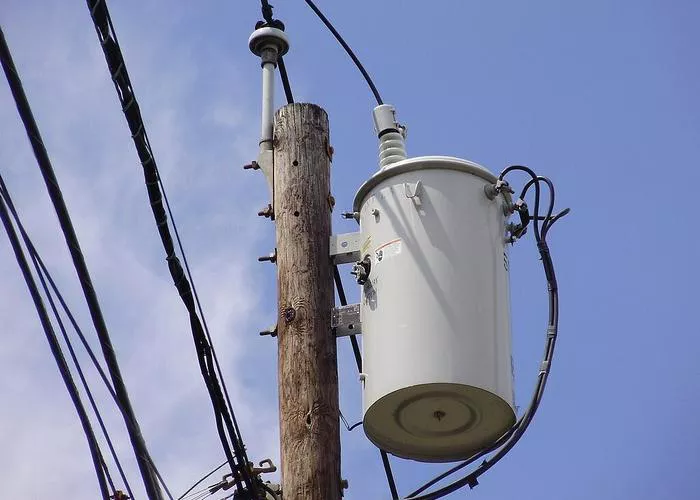Transformers are essential components in electrical power systems, serving to step up or step down voltage levels to facilitate efficient power transmission and distribution. A key aspect often overlooked outside the industry is the liquid inside a transformer, which plays a critical role in the unit’s operation and longevity. This article delves into the types of liquids used in transformers, their functions, advantages, and safety considerations. By understanding these fluids, engineers, technicians, and electrical enthusiasts can appreciate the complexity and necessity of these unseen components within electrical equipment.
Why Do Transformers Need Liquid?
Transformers generate heat during operation due to electrical losses in the core and windings. Managing this heat is vital to prevent damage, maintain efficiency, and extend transformer life. Solid insulation alone cannot effectively dissipate heat, so a liquid medium is introduced for cooling and electrical insulation purposes.
The liquid inside a transformer primarily serves two functions:
- Cooling: It absorbs heat from the core and windings and transfers it to the external environment through radiators or cooling fins.
- Insulation: It electrically isolates the transformer’s energized parts, preventing short circuits and breakdowns.
Common Liquids Used Inside Transformers
Mineral Oil: The Industry Standard
Mineral oil is the most widely used liquid in transformers worldwide. It is a petroleum-derived fluid characterized by excellent electrical insulating properties, good thermal conductivity, and chemical stability. Mineral oil has been the standard transformer liquid for over a century, primarily because of its cost-effectiveness and availability.
However, mineral oil has some drawbacks. It is flammable, which raises fire safety concerns, and it can be environmentally hazardous in the event of leaks. To mitigate these issues, transformers using mineral oil require robust sealing and monitoring systems.
Synthetic Fluids: Advanced Alternatives
To overcome the limitations of mineral oil, synthetic fluids have been developed. These include silicone oils and synthetic esters, which provide enhanced fire resistance and environmental benefits. Silicone oil, for example, is highly stable and non-flammable but is more expensive and less biodegradable than other fluids.
Natural Esters: Eco-Friendly Choices
Natural ester fluids, often derived from vegetable oils such as soybean or sunflower oil, have gained popularity as biodegradable and renewable alternatives. They offer high flash points and excellent dielectric properties, making them safer and more sustainable options for transformer insulation and cooling.
Key Properties of Transformer Liquids
Choosing the right liquid depends on multiple critical properties:
- Dielectric Strength: The liquid must withstand high voltages without breaking down electrically.
- Thermal Conductivity: Efficient heat transfer is necessary to prevent overheating.
- Viscosity: The liquid should flow easily to circulate within the transformer cooling system.
- Flash Point: A higher flash point reduces fire risks.
- Environmental Impact: Biodegradability and toxicity are increasingly important in regulatory compliance.
How Transformer Liquids Work During Operation
Inside the transformer tank, the liquid surrounds the core and windings. As electrical current flows, heat is generated, causing the liquid to warm and rise. Cooler liquid then circulates in, absorbing more heat in a continuous convection cycle.
In many transformers, external radiators or cooling fans enhance this process by increasing surface area and airflow. This active cooling ensures stable operating temperatures even under heavy electrical loads.
Maintenance and Monitoring of Transformer Liquids
Proper maintenance of transformer liquids is essential to ensure operational reliability and safety. Over time, the liquid can degrade due to oxidation, contamination, or moisture ingress, which deteriorates its insulating and cooling properties.
Common maintenance procedures include:
- Regular Sampling and Testing: Checking dielectric strength, moisture content, acidity, and color to detect degradation early.
- Filtration and Degassing: Removing contaminants such as particulate matter and dissolved gases.
- Oil Reconditioning: Treating the liquid with purification processes to restore its quality.
Safety Considerations and Environmental Impact
Transformers containing mineral oil pose fire hazards, so safety protocols are critical. Facilities must implement fire suppression systems and proper containment to handle leaks. Environmental regulations often require careful disposal or recycling of used transformer liquids to prevent soil and water contamination.
Using natural ester fluids can reduce environmental risks due to their biodegradability and non-toxic nature, making them preferable in sensitive locations.
Conclusion
The liquid inside a transformer is far more than just a cooling medium; it is a vital component that ensures electrical insulation, heat dissipation, and operational safety. From traditional mineral oil to eco-friendly natural esters, transformer liquids have evolved to meet the demands of modern electrical equipment and environmental standards.
Understanding the types, properties, and maintenance of these liquids is crucial for anyone involved with transformers, from engineers to maintenance personnel. Choosing the right liquid and ensuring its proper care not only prolongs transformer life but also safeguards people and the environment.
FAQs
What is the most common liquid used inside transformers?
Mineral oil remains the most common transformer liquid due to its excellent insulating properties and cost-effectiveness.
Can transformers use liquids other than mineral oil?
Yes, synthetic fluids like silicone oils and natural esters are increasingly used for their improved fire safety and environmental benefits.
Why is the liquid inside a transformer important?
The liquid provides both cooling to dissipate heat and electrical insulation to prevent short circuits and damage.
How often should transformer liquid be tested?
Regular testing intervals vary by usage and environment, but typically every 1-3 years or after any suspected contamination event.
Are there environmental concerns with transformer liquids?
Yes, mineral oil can be harmful if spilled, whereas natural ester fluids are biodegradable and less toxic, making them more environmentally friendly.

